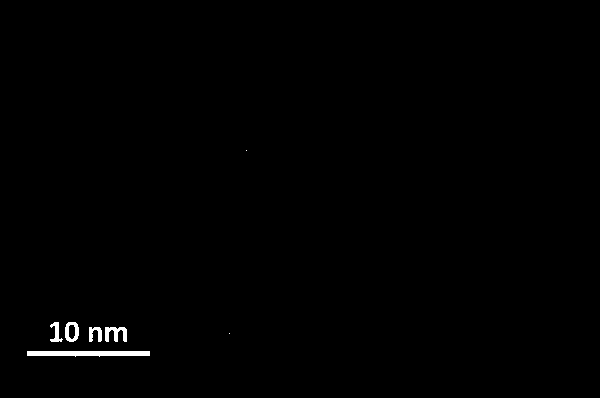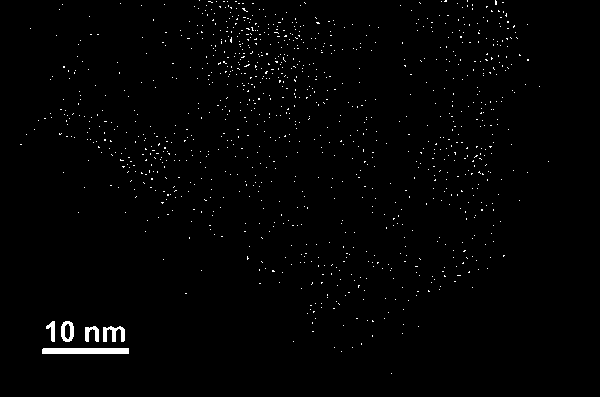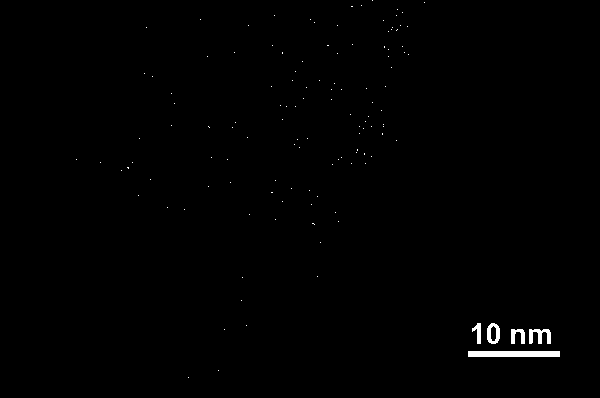Universal method for preparing porous nitrogen and fluorine double-doped carbon-oxygen reduction catalyst
A dual-doping, catalyst technology, applied in electrical components, battery electrodes, circuits, etc., can solve the problems of low F content and no universality, and achieve excellent resistance, enhanced electrochemical performance, and excellent carbon monoxide poisoning effect.
- Summary
- Abstract
- Description
- Claims
- Application Information
AI Technical Summary
Problems solved by technology
Method used
Image
Examples
Embodiment 1
[0039] Step S1: Fully mix 0.5g glucose (carbon precursor) and 0.1321g ammonium fluoride (nitrogen source and fluorine source) to obtain material A1;
[0040] Step S2: Transfer material A1 to a porcelain boat and place it in a tube furnace. Under the protection of inert nitrogen gas, raise the temperature from room temperature to 300°C for 60 minutes, keep at 300°C for 60 minutes, and then increase the temperature at a rate of 10°C / min. Raise the temperature to 500°C and keep it for 120 minutes, then naturally cool down to room temperature to obtain material B1;
[0041] Step S3: Transfer the material B1 to the mixed activator B* prepared in advance (a certain amount of ammonia water is dropped into an aqueous solution containing a certain amount of zinc chloride, and stirred evenly to obtain the mixed activator B*, wherein ammonia monohydrate and chloride The molar ratio of zinc is 1:1), soaked overnight and dried to obtain material C1;
[0042] Step S4: Transfer material C1 ...
Embodiment 2
[0045]Step S1: Fully mix 0.5g glucose (carbon precursor) and 0.2642g ammonium fluoride (nitrogen source and fluorine source) to obtain material A2;
[0046] Step S2: Transfer material A2 to a porcelain boat and place it in a tube furnace. Under the protection of inert gas nitrogen, heat up from room temperature to 300°C for 60 minutes, keep at 300°C for 60 minutes, and then increase the temperature at a rate of 10°C / min. Raise the temperature to 500°C and keep it for 120min, then naturally cool down to room temperature to obtain material B2;
[0047] Step S3: Transfer the material B2 to the mixed activator B* prepared in advance (a certain amount of ammonia water is dropped into an aqueous solution containing a certain amount of zinc chloride, and stirred evenly to obtain the mixed activator B*, wherein ammonia monohydrate and chloride The molar ratio of zinc is 1:1), soaked overnight and dried to obtain material C2;
[0048] Step S4: Transfer material C2 to a porcelain boat ...
Embodiment 3
[0051] Step S1: Fully mix 0.5g glucose (carbon precursor) and 0.3964g ammonium fluoride (nitrogen source and fluorine source) to obtain material A3;
[0052] Step S2: Transfer material A3 to a porcelain boat and place it in a tube furnace. Under the protection of inert gas nitrogen, heat up from room temperature to 300°C for 60 minutes, keep at 300°C for 60 minutes, and then increase the temperature at a rate of 10°C / min. Raise the temperature to 500°C and keep it for 120min, then naturally cool down to room temperature to obtain material B3;
[0053] Step S3: Transfer the material B3 to the mixed activator B* prepared in advance (a certain amount of ammonia water is dropped into an aqueous solution containing a certain amount of zinc chloride, and stirred evenly to obtain the mixed activator B*, wherein ammonia monohydrate and chloride The molar ratio of zinc is 1:1), soaked overnight and dried to obtain material C3;
[0054] Step S4: Transfer the material C3 to a porcelain ...
PUM
 Login to View More
Login to View More Abstract
Description
Claims
Application Information
 Login to View More
Login to View More - R&D
- Intellectual Property
- Life Sciences
- Materials
- Tech Scout
- Unparalleled Data Quality
- Higher Quality Content
- 60% Fewer Hallucinations
Browse by: Latest US Patents, China's latest patents, Technical Efficacy Thesaurus, Application Domain, Technology Topic, Popular Technical Reports.
© 2025 PatSnap. All rights reserved.Legal|Privacy policy|Modern Slavery Act Transparency Statement|Sitemap|About US| Contact US: help@patsnap.com



